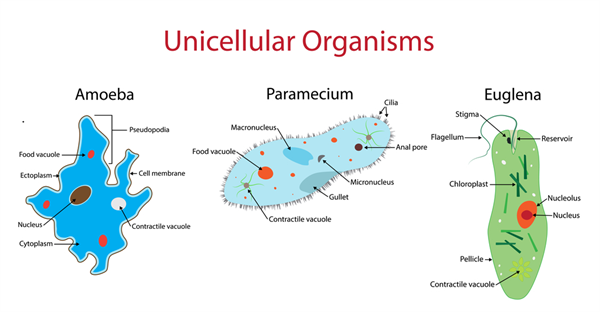
PUMPA - SMART LEARNING
எங்கள் ஆசிரியர்களுடன் 1-ஆன்-1 ஆலோசனை நேரத்தைப் பெறுங்கள். டாப்பர் ஆவதற்கு நாங்கள் பயிற்சி அளிப்போம்
Book Free Demo
Every organism has trillions of cells, but an entire organism begins from a single cell, a fertilized egg known as a zygote. During cleavage this fertilized egg multiplies, thereby increasing the number of cells as the development occurs. One substantial single-celled zygote proliferate into numerous compact cells. 
The number of cells varies in all living organisms. Based on the number of cells, the organisms are classified into two groups, namely unicellular & multicellular.
Important!
Wonder facts:
- We have approximately, 37.2 trillion cells; each of these cells varies in shapes and sizes.
- In our human body, 1 million cells die every second.
Unicellular organisms:
The organisms consist of only one cell are called unicellular organisms. In a unicellular organism, a single cell has to perform all the life processes like respiration, digestion, absorption, excretion, growth and development as there is no division of labour.
Example:
Bacteria, amoeba, plankton, paramecium, euglena and chlamydomonas. 

Bacteria

Unicellular organisms
Reference:
https://commons.wikimedia.org/wiki/File:Simple_diagram_of_bacterium_(en).svg